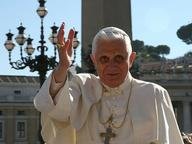Quiz Answer Key and Fun Facts
1. St. Peter, the first pope, was martyred by the Romans. How was he killed?
2. Pope St. Miltiades of Africa was the first pope to serve free of Roman persecution after Constantine released what document, in 313 AD?
3. Pope Saint Leo I is said to have convinced an invader to stop his attack upon Italy and withdraw in 452 AD. Who was this invader?
4. In 516 AD Pope Hormisdas brought about the reunion of the Eastern Church of Rome, and the Western Church of Constantinople. This ended what religious divide?
5. Marozia of the Theophylact family had a son with Pope Sergius III (though some dispute that). She later plotted to have Pope John X killed so that her son, Pope John XI, could come into power in 931 AD. This period of political corruption was known as the Saeculum Obscurum. What does Saeculum Obscurum mean?
6. In 1095 AD, Pope Urban II received a request from the Byzantine emperor to help fight the Muslim Turks. Pope Urban II gathered support to send a force to capture the Holy Lands and free the Western church. What is this military adventure now called?
7. Pope Honorius II founded a military order in 1128 AD for the protection of Christian pilgrims. What was this order called?
8. In 1477 AD Ferdinand II of Aragon requested of Pope Sixtus IV that he start the practice of questioning and persecuting those who questioned Church Orthodoxy, particularly Jewish and Muslim converts to Christianity. What was this practice called?
9. Starting in 1032 AD, Pope Benedict IX served as pope at three separate times. Why did he leave as pope and return?
10. About 1348 AD, Pope Clement VI granted remission of sins to all who died in a particular disaster. How did these Catholics die?
Source: Author
PhillyRex
This quiz was reviewed by FunTrivia editor
looney_tunes before going online.
Any errors found in FunTrivia content are routinely corrected through our feedback system.

